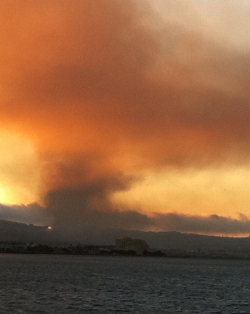Reasons why we should learn from the deadly accident in Africa
Initial reports out of Nairobi say at least 68 residents of a densely populated part of the city died after Kenya Pipeline Company workers failed to contain a leak. The concern in the United States is that this disaster could become commonplace once TransCanada’s Keystone XL expansion is put into place.
1-Comparing infrastructure failures and the death tolls
While the Kenyan explosion is the first of its kind in the unstable nation, it is the tenth reported explosion in the African continent since 1998. Most of the reported incidents since 1998 happened in Nigeria where an estimated 2,000 lives have been lost because of pipeline related accidents. Still, the number of explosions in Africa over the last 13 years is far fewer than the number of pipeline accidents in reported by TransCanada’s existing Keystone pipeline in the past year alone. That number happens to be 12. Other reports reveal that between 2010 and 2011 nine different explosions in the United States caused 18 deaths, 13 injuries and 85 destroyed homes in the United States.
2-Different causes create different causes for concern
While many of the accidents in Africa are the result of human caused damage, the toxic blend of Tar Sands crude is the cause of the spills and explosions in the current Keystone pipeline. A recent study by the Natural Resources Defense Council reveals that that internal corrosion from the mixture of diluted bitumen and volatile natural gas liquid condensate, which passes through the existing tar sands pipelines, has caused 16 spills in the Keystone system in both Alberta and the United States in recent years.
3-TransCanada distorts numbers ignores past
Despite the concerns about the Kenyan disaster and the rash of spills in the United States, there have been serious questions as to the legitimacy of TransCanada’s assessment of the risks created by an expanded Keystone XL pipeline system. An assessment from TransCanada said that it expected the expanded pipeline system to have 11 spills over the next 50 years. This assessment is far lower than a University of Nebraska study, which stated that over the next 50 years the expanded Keystone XL pipeline is likely to leak nearly 100 times. So what accounts for such a discrepancy in this evaluation? The University of Nebraska study says that TransCanada was making three unrealistic assumptions while it tried to convince the public that their pipeline would be safe.
From the report:
“The primary questionable assumptions are: (1) TransCanada ignored historical data that represents 23 percent of historical pipeline spills, and (2) TransCanada assumed that its pipeline would be constructed so well that it would have only half as many spills as the other pipelines in service (on top of the 23 percent missing data), even though they will operate the pipeline at higher temperatures and pressures and the crude oil that will be transported through the Keystone XL pipeline will be more corrosive than the conventional crude oil transported in existing pipelines. All of these factors tend to increase spill frequency; therefore, a more realistic assessment of expected frequency of significant spills is 0.00109 spills per year per mile (from the historical data (PHMSA, 2009)) resulting in 91 major spills over a 50 year design life of the pipeline.”
4-Protecting the pipeline
The Kenyan pipeline explosion comes at a time when Americans are understandable concerned about national security and the threats caused by human activity. Pipeline accidents in Africa, especially in Nigeria, are often the result of people trying to tap into the pipeline to siphon of fuel. When this happens spills often result and the smallest ignition can cause a huge disaster. Reports out of Kenya say that a discarded cigarette may have ignited the fuel near the pipeline in Nairobi, while workers tried to fix a hole caused by people trying to tap into the pipeline. This type of accident could be duplicated along the 1,661-mile length of the Keystone. A recent Checks and Balances Project report revealed that protecting a similar length interest, the southern border of the United States, requires more than 20,000 military troops at a huge cost to the American taxpayer. Beyond the developing situation in Kenya, concerns about sabotage to American pipelines have become a reality of a post 9/11-world. In 2005 Gal Luft, the Executive Director of the Institute for the Analysis of Global Security (IAGS) proclaimed that pipeline sabotage is becoming a “weapon of choice” for terrorists.
Read more:
3 Security Concerns with the Keystone Pipeline
Safety in Pipelines: The Fracking Truth
Five Things to Consider about the Yellowstone Pipeline
Video Outlines Industry Influence over State Department and Keystone XL



No comments:
Post a Comment